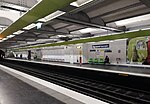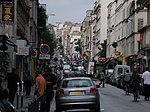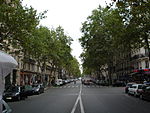On 7 January 2015, at about 11:30 a.m. CET local time, two French Muslim brothers, Saïd and Chérif Kouachi, forced their way into the offices of the French satirical weekly newspaper Charlie Hebdo in Paris. Armed with rifles and other weapons, they killed 12 people and injured 11 others. The gunmen identified themselves as belonging to the Islamic terrorist group al-Qaeda in the Arabian Peninsula, which took responsibility for the attack. Several related attacks followed in the Île-de-France region on 7–9 January 2015, including the Hypercacher kosher supermarket siege, where a terrorist killed four Jewish people.
France raised its Vigipirate terror alert and deployed soldiers in Île-de-France and Picardy. A major manhunt led to the discovery of the suspects, who exchanged fire with police. The brothers took hostages at a signage company in Dammartin-en-Goële on 9 January and were shot dead when they emerged from the building firing.
On 11 January, about two million people, including more than 40 world leaders, met in Paris for a rally of national unity, and 3.7 million people joined demonstrations across France. The phrase Je suis Charlie became a common slogan of support at rallies and on social media. The staff of Charlie Hebdo continued with the publication, and the following issue print ran 7.95 million copies in six languages, compared to its typical print run of 60,000 in French only.
Charlie Hebdo is a publication that has always courted controversy with satirical attacks on political and religious leaders. It published cartoons of the Islamic prophet Muhammad in 2012, forcing France to temporarily close embassies and schools in more than 20 countries amid fears of reprisals. Its offices were firebombed in November 2011 after publishing a previous caricature of Muhammad on its cover.
On 16 December 2020, 14 people who were accomplices to both the Charlie Hebdo and Jewish supermarket attackers were convicted. However, three of these accomplices were still not yet captured and were tried in absentia.












